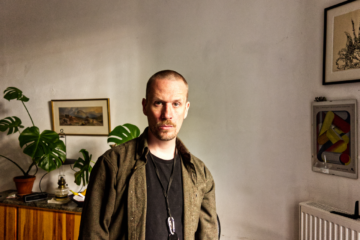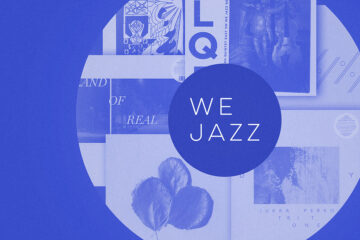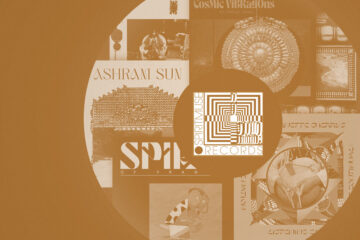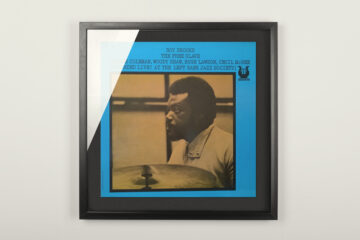In the 21st century distances are hardly an issue anymore. The world is interconnected, McLuhans global village long since a reality and thus cultural interaction between countries and continents is at a historic high point. Where anything is in contact with everything else, influences become unforeseeable – especially in jazz, this creative cross-pollination has a certain tradition in changing lineups of smaller as well as larger combos and may be even crucial for the dynamics with which the genre is able to reinvent itself time and time again. Still it is remarkable how consistent even after the collapse of the Soviet Union a lively musical exchange was able to evolve between cities and projects in the Baltics and neighboring Finland. Even though jazz emancipated itself from American influences as early as the 70s and incorporated country-specific avant-garde, folk, classical music or regional styles like runolaulu (rune singing), during the last three decades things gained momentum in an artistic as well as societal sense. From the most northern large city in Europe Oulu to Helsinki and the Estonian capital Tallinn at the Gulf of Finland, to the biggest urban agglomeration of the Baltics around Riga and further south to Vilnius many local scenes evolved since the millennium, supported through labels, festivals and venues alike. Even considering geographical distances, the junctions are placed much closer under the surface.
»I think there are several scenes already in any one town, so maybe there isn’t such a coherent scene or even a stylistic branch, which would be just local. Actually I think labels create scenes. ECM is a scene, International Anthem is a scene, the great Berlin electronic label Faitiche is a scene, even though each have artists from many places producing the work they put out. So I would say We Jazz should be a scene as well, and often it feels like that« says Matti Nives, founder and head of We Jazz, which since 2013 as festival and since 2016 as label became a catalyst of fresh genre varieties in the land of a thousand lakes. Quite similar to the yearly held Flow Festival in Helsinki or the immensely important label Ricky-Tick which was closed in 2011, We Jazz unites young musicians from jazz, soul, funk and experimental electronica, but also makes room for unconventional live experiences without reservations – in Finland as well as the Baltics. »We always try to look for new places and of course, also to keep some of the previous ones, often modified and tried out in different ways.
Sometimes the experiments are quite subtle and it’s more about creating the right setting for each performance, but sometimes they are heavier such as Mopo doing 24 gigs in 24 hours during the festival around Helsinki, or a concert in complete darkness. Last year we also did a secret gig without sharing any performance info before the event (just the time and the meeting point from where we went on to the gig together with the audience members). We also like the idea of blurring the lines of what a performance is and often I think the best things come out of providing a meeting point for the artist and the audience on a common level. Whenever a gig feels later like it might have been something you experienced in a dream, it’s a good one.«»I think there are several scenes already in any one town, so maybe there isn’t such a coherent scene or even a stylistic branch, which would be just local. Actually I think labels create scenes. «
Matti Nives
Manageable in size but very active, the artist community in Helsinki can count on engaged people like Nives who is crate-digging nonstop, visiting concerts and listening to each and every demo sent to him. Curation is imperative, since there is no lack of new talents obviously. But it is not just about promotion and distribution. The heads behind those Baltic and Finnish labels that are really active also want to accompany the production process and work as closely as possible with the artists – an approach that maybe is even more present here than in Anglo-American or Asian jazz. »I love finding the right ideas for the label, that’s one of my favourite things. The way we work, the most potential projects are usually those which are still quite open. I often produce the albums with the artists, working on the music and then on the design. I think this creates a certain kind of hands-on vision which will appear as personal and will be an inspiring musical message as a whole, at least I hope so«, adds Nives. »I rarely take on a project where the album would be done already, as I think our label’s strength is working together with the artist. It’s not about interference, but rather about working together to do an album which would have a strong character. Often this means questioning something, proposing something, and just being in tune with what’s needed to form a beautiful and coherent vision of the release-to-be. That is so much fun! I love the process and the friendships it generates.«
You can find Jazz from the baltic States and Finland in [the HHV Records webshop](https://www.hhv.de/shop/de/baltic-jazz/i:D2S12SP15686)
While other Scandinavian countries like Norway or Denmark are offering considerable public funds for art and culture, Finnish as well as Baltic jazz musicians are still reliant on the commercial proceeds of their output. Experiments are appreciated but the influence of bebop or post-bop was always more dominant than that of styles such as avant-garde or free jazz, which would find more creative followers and financial patrons in Norway, for example. If you touch down at prestigious Sibelius Academy (today University of the Arts Helsinki) as a young jazz drummer and proclaim Edward Vesala as your hero, you probably get accepted only with luck, let alone being supported financially. Here the public, selective and unfortunately necessary support of artists shows its cultural aftershocks. Largely because of historical reasons, the Finnish jazz tradition is nevertheless more closely oriented towards Scandinavia than the Baltics or neighboring Russia, whose influence on the northern European jazz development was rather marginal, says Fredrik Lavik, who since 2007 is unearthing up-and-coming talents as well as rare gems from the past with his label Jazzaggression Records. »When jazz was the hot-bed and more socially appraised than it is today, the Soviet Union was closed off. It was more the other way around, Tallinn and St. Petersburg musicians had long-range radios and were tuned in to Finland/Europe and listening to jazz weekly for inspiration. Also a lot of the Russian musicians were cross-genre trained, they could very well play classical music as well as contemporary etc. – anything, not just jazz. This wasn’t the case over here in Finland.«
With the sociopolitical turning point and the fragmentation of the Soviet Union into sovereign states, things began to change drastically on both sides of the Iron Curtain. Estonia, Latvia Lithuania, the whole Baltic region opened up its floodgates and seasoned virtuosos such as sax players Arvo Pilliroog and Lembit Saarsalu, guitarist Tiit Paulus or multi-instrumentalist Helmut Aniko (all from Estonia) were moving onto the international stage. Just as the highly engaged and sworn in cadre of the legendary Birstonas Jazz Festival in Lithuania, which operated in secret since 1980 and where every Lithuanian jazz musician performed at least once, according to musicologist and historian Darius Uzkuraitis – today Birstonas is an insider tip for improvisation enthusiasts from all over the globe. From 1990 onwards Jazzkaar Festival in Tallinn ties in big names from the national and international level and since then has evolved to the biggest, most visited event for jazz music in all of the Baltics, counting more than 3000 artists from over 60 countries since its inception, playing for up to 25.000 visitors annually.
From Helsinki to Tallinn it is only two hours via ferry. The music that is being pushed by Jazzaggression, We Jazz or Timmion Records further in the north, is represented here by young labels like Frotee or RR Gems since the beginning of the 2010s. Their curation became quite unpredictable just after a few releases and is among the most interesting material advancing from the Baltics into the rest of Europe. Because of the relative geographical proximity, fruitful relations could grow between the neighboring states at the Baltic Sea, which not only manifest in contacts between labels and festivals. Also music students, participants of workshops, established soloists and bands are traveling from Helsinki to Vilnius and back, visiting small and big cities in between, where younger generations are evoking a much needed vitality of a slowly but surely growing community whose understanding of jazz is adventurous -since it is less limited by western norms of pop culture- but at the same time tonally grounded. Junctures are often only visible at third glance, which is also exemplified in Frotee label founder Martin Jõela, who is not only a year-long friend of Fredrik Lavik, working with him on several Estonian Releases from Jaan Kuman to Raivo Tammik Instrumental Ensemble, but also gets named by the founders of RR Gems as one of the main inspirations for starting their own label. Vice versa, Jõela considers the work of We Jazz, Jazzaggression, Timmion Records and RR Gems as essential for the developing musical situation in Finland and the Baltics. »Our concert scene has become more interesting thanks to We Jazz, who has brought Finnish acts to perform in Tallinn at Sveta Baar, a great place, which in the next moment could be a dark techno club. RR Gems and We Jazz held a really great event there last December, where Muriel Grossman was presenting her new album in the course of We Jazz Festival.« The enthusiasm is shared by Dmitri from RR Gems, who begins to rave when talking about Grossmanns live performance: »After seeing so many beautiful people turning up to the concert, I really felt like something is happening there. The support we have received is incredible and I am grateful for that reward. I really love what they [We Jazz] do for the music and the scene they have created in Finland is astonishing.«»When jazz was the hot-bed and more socially appraised than it is today, the Soviet Union was closed off.«
Fredrik Lavik
You can find Jazz from the baltic States and Finland in [the HHV Records webshop](https://www.hhv.de/shop/de/baltic-jazz/i:D2S12SP15686)
So everything sunshine and roses? Not quite. Sure, there is much movement in those Baltic and Finnish scenes, but Dmitri as well as Martin Jõela do have their valid critique for both: »In Estonia budgets are definitely smaller and same with public numbers, so Jazzkaar caters mostly for broader and well-paying taste«, finds Jõela. »Though they have always brought in modern club jazz acts. Personally, I think their choices for younger audiences haven’t been always very up to date. For example, they have ignored groups from the recent London jazz scene or even young Finnish jazz acts. Though during the years there has been good bands and good legends performing.« Dmitri also sees some catching up to do: »I would like to see more diverse artists coming to Estonia. I’d like to see a trend where more up and coming bands are coming to play here. […] It’s very common to see already established and more ‘oldies’ artists coming to play here. But the chances to see a gig of Black Monumental Ensemble, Moses Boyd, Ill Considered – or just add any name you learned during the last couple of years – are close to nothing. There is not enough cooperation on an international level.«
Sure, things could be better, but also much worse, as a short retrospective can illustrate. »During Soviet time Estonia was occupied by the Soviet Union. There was only one record label in the whole USSR, namely Melodija (Мелодия). You couldn’t start your own label and it was really hard to start your own studio. In Tallinn there were only a couple of state-owned studios. The best one was the Estonian Radio studio. It was mostly used for classical or propaganda or easy listening recordings, while more serious musicians sneaked into the studio at night time. Maybe once a year something was released on Melodija, but most of those recordings stayed at archives, sometimes played on radio. Thankfully most of the archive is still present and Estonian Public Broadcasting has been digitizing it. I asked for access to the archive and have done research there, browsing the catalog and listening to tracks, which led to findings like ›Keegi‹ from Elektra or Velly Joonas’ ›Käes on aeg‹. Jaak Jürisson’s recordings came also from that archive. At first I saw an old TV show where he was playing some nice music, from that archive I found a full recording session made a few years earlier.«
Especially Latvia had to deal with the aftermaths of the Soviet era, which is exemplified clearly in a cultural paradox: On the one hand the country is known for its millennia old folklore and music culture, with well over one million orally passed down Dainas, Latvian folk songs (usually four-liners) that are globally unique. On the other hand the evolution of contemporary music seems to be delayed, jazz included. Although there is the Saulkrasti Jazz Festival since 1997 in the small town of the same name and the Riga Jazz Contest, where particularly European jazz musicians are invited to demonstrate their skills, there was hardly any expansion of a national jazz scene in this country with its magnificent landscapes. First steps in that direction are taken by Mareks Ameriks since 2017 with his label Jersika Records. Here most of the releases are recorded analogue and live onto master tapes before the get cut into vinyl. An effort that is usually only made by bigger labels and raises hopes for Latvian jazz presenting itself more prominent in the coming years, whether in the Baltics or Europe in general.»During Soviet time Estonia was occupied by the Soviet Union. There was only one record label in the whole USSR, namely Melodija (Мелодия). You couldn’t start your own label and it was really hard to start your own studio.«
Martin Jõela
Even if the status of the music and live entertainment industry seems to be quite battered lately through pandemic upheavals, bars, clubs and labels in the Baltics as well as in Finland are refusing to give up their cultural work of the past (or coming) years. »Indeed, it is a great struggle at the moment«, Dmitri confirms. »It certainly doesn’t make a lot of sense to bring artists from abroad due to imposed capacity limitations for the venues. Local clubs like Sveta Baar or Philly Joe’s are already organizing concert events with local artists and selling limited amounts of tickets. It’s a little bit early to say whether it turns out to be sustainable. Media is scaring people out of their wits, large gatherings are banned and of course people analyzing their spending habits more these days… I hope there is a way from this cultural crisis. I still hope for resurgence of live music. And bringing ideas back into life, like the Brahja EU tour. We will definitely continue our concert organizing cooperation once we are free again.«
You can find Jazz from the baltic States and Finland in [the HHV Records webshop](https://www.hhv.de/shop/de/baltic-jazz/i:D2S12SP15686)









